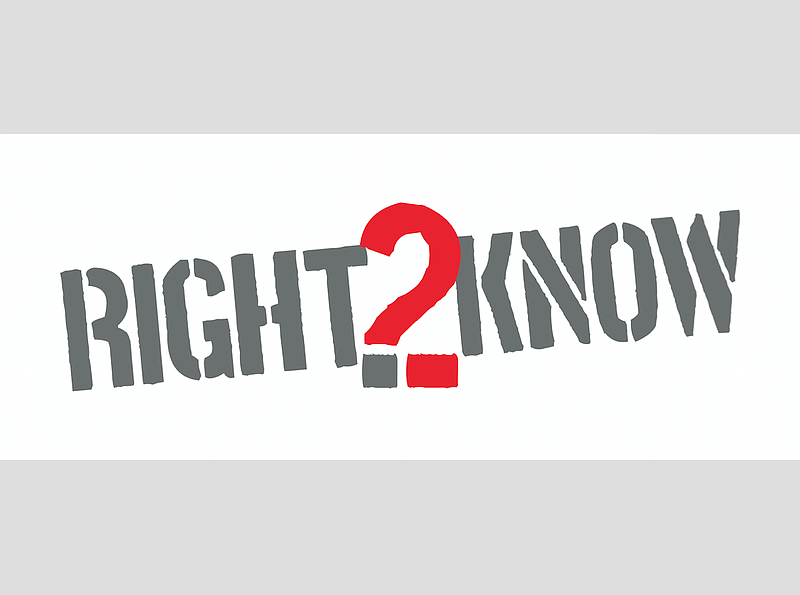The Chattanooga Times Free Press will no longer display mugshots of everyone arrested in Hamilton County, which the paper has done for the past 10 years on a site called Right2Know.
The mugshot element of that site closed today.
The Right2Know gallery was started as part of an effort to showcase information on public records laws, and maps of shootings and homicides. The information on the Right2Know site - photos of people arrested, the charges they face and the arresting agencies - is publicly available information, but we made it widely accessible on one site. Millions of people clicked on it every month. Providing this information was done with good intentions - to offer more public information to the public.
But after months of discussion, we have concluded that making the gallery of mugshots widely available is not consistent with our mission to serve and inform our community.
We also decided running a photo of someone when they get arrested - probably one of worst days of their life - reinforces negative stereotypes, presents a limited and potentially distorted view of the events surrounding the arrest, and in most cases does not provide necessary context or uphold journalistic values.
The truth is, not all arrests are newsworthy.
We publish thoroughly reported stories every week about arrests and people accused of crimes. In those cases, we use the standards of judgment common across our industry to determine which crimes are worthy of reporting.
If police are searching for a suspect who may be dangerous, the public wants and needs that information. When someone is accused of killing or kidnapping another person, or is charged with a felony such as aggravated robbery, the severity of the crime means it serves the public interest to inform our community. And when a person with a public presence is arrested - an elected official or a minister, for example - that is generally considered newsworthy because that person likely enjoys some level of public trust, or at least relatively broad recognition.
Many of the arrests on Right2Know are for nonviolent misdemeanors by private individuals such as trespassing, loitering or passing worthless checks. Those are charges we'd never consider newsworthy enough to cover as a story.
In addition, when we deem an arrest worthy of a story, we try to interview the person accused (or, more likely, their lawyer). They don't always want to talk, but we do our best to give them the opportunity.
Unlike in a story about an arrest, the paper did not give people with mugshots on Right2Know an opportunity to respond to the charges or tell their side of the story.
An arrest in the digital era can haunt someone and limit their educational and job possibilities for years, even if the charges are minor or were dropped.
Before the advent of online information and social media, an arrest for a minor offense didn't typically result in disproportionate impact. But today, a 30-second search by a potential employer or college admissions official could turn up an old arrest online. Even in cases in which the charges were dropped or the person found not guilty, many of the mugshots remain.
(We did remove the mugshots of those who provided expungement or dismissal paperwork, but that placed the burden on the arrestee, and many people did not contact us.)
If you got arrested on Sept. 1, 2010, the day Right2Know first appeared, your mugshot was still there until we closed the site today.
One of the men whose mugshot was posted that day was arrested on charges of driving on a revoked license and driving an unregistered vehicle.
Does the public need to know that 10 years later?
In recent months, dozens of newspapers across the country have discontinued such galleries amid criticism that they are an arena for public shaming, disproportionately show Black and brown faces and over-emphasize the police version of events at a time when policing is under great scrutiny.
"Editors have recognized for years that mugshot galleries are problematic because they amplify systemic racism represented in law enforcement," said Kelly McBride, senior vice president and chair of the Craig Newmark Center for Ethics and Leadership at the Poynter Institute, a nonprofit journalism school and research organization.
It's not just newspapers that are changing course on mugshots.
Our partners at WRCB-TV Channel 3 announced recently they will limit the use of mugshots and only use them if police are looking for a suspect, if a suspect is a public threat, if sharing a photo may help additional alleged victims come forward, or if the mugshot helps differentiate among people with a common name.
The Times Free Press will continue to maintain maps showing shootings and homicides in Hamilton County, a feature located on the Right2Know site. We will continue to report on arrests data and examine the trends it shows. We will continue to report on newsworthy crimes, and we will identify the people accused of these crimes. We'll publish their photos, too.
But in the digital era, where one post can follow someone for many years, we will also avoid shaming people.
Alison Gerber is the editor of the Times Free Press. Reach her at agerber@timesfreepress.com.
